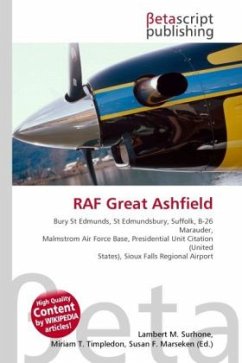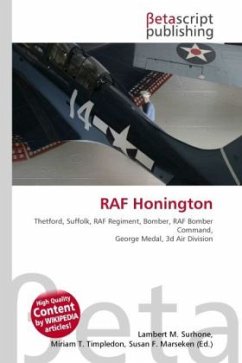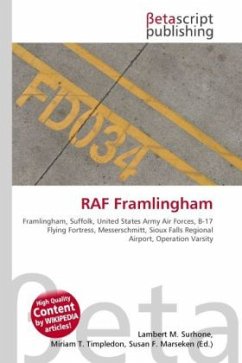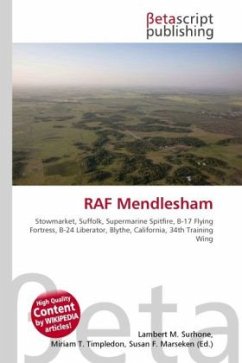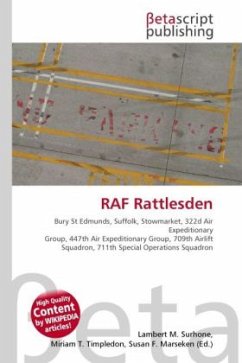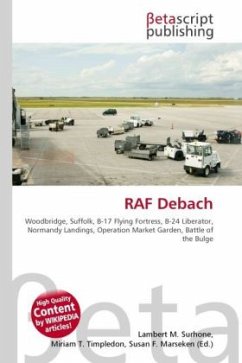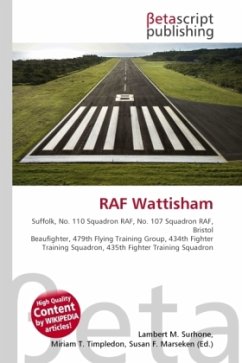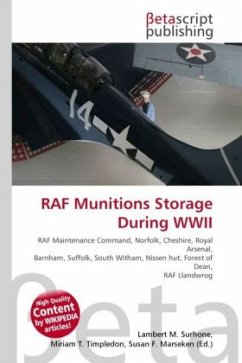
RAF Munitions Storage During WWII
Versandkostenfrei!
Versandfertig in 6-10 Tagen
30,99 €
inkl. MwSt.

PAYBACK Punkte
15 °P sammeln!
High Quality Content by WIKIPEDIA articles! The logistics organizations of the Royal Air Force in World War II were No. 42 Group and RAF Maintenance Command. As a result of a serious shortage of funds during the inter-war period and a weakness of policy the RAF was singularly ill-equipped to deal with the requirements of air warfare with regard to the protected storage of explosives. In 1935 the RAF had only two ammunition dumps, one at Sinderland, Cheshire, and the other in Norfolk, at Pulham. Both sites' storage consisted of metal sheds connected by standard gauge rail tracks. In 1935 the st...
High Quality Content by WIKIPEDIA articles! The logistics organizations of the Royal Air Force in World War II were No. 42 Group and RAF Maintenance Command. As a result of a serious shortage of funds during the inter-war period and a weakness of policy the RAF was singularly ill-equipped to deal with the requirements of air warfare with regard to the protected storage of explosives. In 1935 the RAF had only two ammunition dumps, one at Sinderland, Cheshire, and the other in Norfolk, at Pulham. Both sites' storage consisted of metal sheds connected by standard gauge rail tracks. In 1935 the standard bomb of the RAF was a 250 lb (110 kg) device containing high explosives, the largest bomb being 500 lb (230 kg). There had been some small-scale use of underground munitions stores in Britain during World War I, although these were more general purpose than specifically for the RAF. Chislehurst Cave was bought in October 1914 and a small portion of the twenty miles (32 km) of tunnels was prepared for storing up to 1,000 tons of explosives and raw materials for the Royal Arsenal, Woolwich, nine miles (14 km) away.



